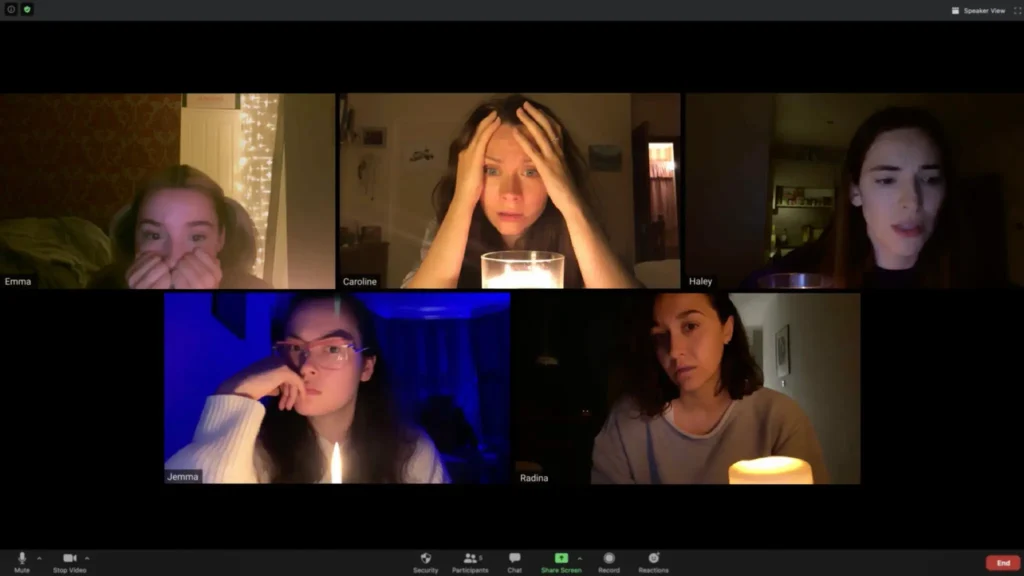It’s Found Footage February, one of my favorite times of the year. From Cannibal Holocaust to now, found footage has evolved in ways most subgenres don’t. It grew to span multiple subgenres within the subgenre and even branched out into other genres like comedy (Project X) and action (Hardcore Henry). Also, don’t @ me for calling Hardcore Henry a found footage movie. With Found Footage February in mind, my goal became to highlight four standout found footage movies from each release year of the 2020s. Four weeks, four modern found footage movies. Let’s journey back into the early times, a darker time; the year was 2020.
Host is a Unique Movie from a Unique Time
There’s no need to dredge up the past, we all remember how uncertain 2020 was. If there was a positive side to the pandemic, besides introverts like myself being allowed to work from home, it’s that found footage became one of the few viable films that could still be made. Filmmakers could set up cameras in their homes, go camping in the woods, or…use a dashcam. What forced limitations on an entire industry gave a subsection of that industry carte blanche to run a genre. COVID may have taken the world by storm, but so did found footage.
Inevitably, there would be movies about COVID, which spawned the quar-horror subgenre. (I’m not sure if there’s a name for it, but that’s what I call it.) 2020’s Host took Shudder, and the genre, by storm. Host took the real world fears many of us were entrenched in and expertly applied them to tell a terrifying slice-of-life tale. In a recent watch, the film doesn’t feel like it holds up as much, but it can still bring some truly terrifying moments in a bite-sized package.
Host boasts a runtime of under one hour, but that’s not as bad as it sounds. Even though the denouement wraps the story up nicely by around the 55-minute mark, the stinger that ends the film is an incredibly effective bit that makes anyone who’s been on a Zoom meeting chuckle. The behind-the-scenes story of Host is almost more enjoyable than the film itself. A group of friends coming together in the pandemic to make a film, each person acting as their own makeup designer (with the assistance of an SFX artist), being their own cinematographers (presumably with the help of director Rob Savage), and in the case of Teddy (Teddy Linard) acting as their own stunt person.
A Small Cast of Very Likeable Friends
The real-life friend group shares heaps of chemistry from the opening scene. Neither the actors nor the film lose any bit of that chemistry or charisma throughout its short-lived runtime. Host’s scares come fairly infrequently and aren’t incredibly original. Writers Rob Savage, Gemma Hurley, and Jed Shepherd do a solid job of taking scares that have been done before working them seamlessly into the story. Would a feature-length version of Host have worked? Probably not. There’s not enough substance or ideas within Host that warrant a feature film. The film we are presented with does the job and leaves before it overstays its welcome–something many modern horror films could learn from.
If there is one huge negative aspect about Host, it is how it paved the way for Savage to make Dashcam. Host at least has some heart and soul to it. Instead of relying on emotional reactions to try and bring something to your nothing film, Host understands the formula. If there is another positive aspect about Host, it paved the way for Savage to make Boogeyman!
